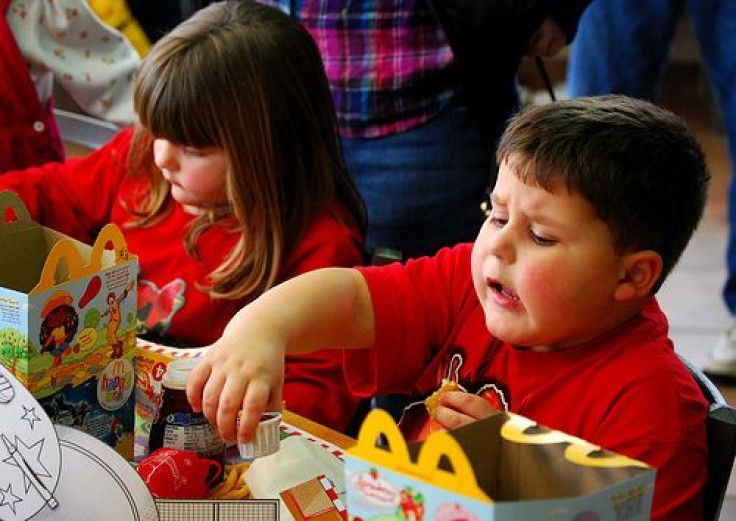Kids In Fast Food-Heavy Areas More Often Obese: Who’s To Blame, The Drive-Thru Or The Driver?

Kids that grow up in places where fast food is readily accessible are more likely to become obese compared with kids whose diets were more likely to consist of home-cooked meals and healthier quick service options, a new study finds.
The problem of childhood obesity, while serious by all accounts, is something like a joke told by the late stand-up comedian Mitch Hedberg: His belt is holding up his pants, he says, but his belt loops are holding up his belt. So who’s the real hero? Beneath the puzzling wit lies a more fundamental debate about the way people view the balance between parent and corporate responsibility. Are parents to blame for giving their kids unhealthy food, or are fast food restaurants the bad guys for offering it in the first place?
Politically, the lines are clear. Conservatives tend to blame the parents, and later the children, for patronizing the businesses that solely exist to sell a product — not fulfill some spectral agenda. Liberals, meanwhile, argue there’s more to the story than just personal responsibility. And even then, for the people who eat fast food it’s not always because they choose to; it may simply be what they can afford. After all, the McDouble has been called the “cheapest, most nutritious and bountiful” food in human history.
Researchers from the University of East Anglia and the Centre for Diet and Activity Research in the UK culled through data on more than a million children, comparing the kids’ health to the density of unhealthy quick service restaurants in their area. They didn’t look directly at the food they ate; rather, the incidence of childhood obesity relative to the number of places that sold sweets over salads.
By the authors’ own admission, the study’s differences weren’t massive. Poverty played a role, but not a huge one. “We already knew that children in poorer areas are more likely to be overweight or obese,” lead researcher Professor Andy Jones of Norwich Medical School told Medical Daily, “and in this study we were interested to see if the types of food outlets in their environments explained this.”
In the United States, childhood obesity has ballooned in recent years. The number of overweight kids has doubled in the last 30 years, and the number of obese adolescents has tripled, according to the Centers for Disease Control and Prevention. Jones and his team found a similar trend. Kids of an older age were more likely to be overweight in the same regions as the younger cohort, a fact the team chalked up to growing independence and less parent oversight.
Like Mitch Hedberg’s belt problem, solving one piece of the obesity puzzle still leaves many pieces unaccounted for. Jones, for one, believes the problem isn’t as cut and dry as political dogma tends to slice it. Parents are responsible for feeding their children, regardless of where it comes from, and eating to survive will always trump eating to manage cholesterol levels. But allowing consumers to make their own choices, free from constricting oversight, is a basic part of a free society.
“These results suggest that food outlets are one piece of the complex jigsaw puzzle of influences on childhood obesity,” Jones said. “But they also emphasize the need to plan environments so that healthy, rather the unhealthy, choices are the easiest ones to make. This isn't something that we've typically done very well in the past.”
Source: Cetateanu A, Jones A. Understanding the relationship between food environments, deprivation and childhood overweight and obesity: evidence from a cross sectional England-wide study. Health and Place. 2014.



























